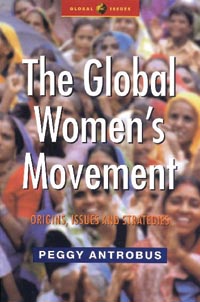Summarizing Areas of Learning
Global Women's Perspective is a technology intensive course. During the course, I created power points with voice-over, websites, and learned how to make an e-folio. The class has increased my knowledge of technology and built on previous skills obtained with power point and design.
This is a link to my e-folio
The relationships between women throughout the world are unique and collectively can obtain shared goals. Women in undeveloped countries often get left out by women in developed countries. Women forget they share adversities with others who are not like themselves.
Women's movements do not equal feminist movements. When doing research for projects, I came across many organizations for women that were not feminist. Women in Global Perspective has taught me how to tell the difference and identify what is feminist and what is not. Femininist organizations require groups to not just help women, but to help advance them in their fight for equality.
Activism starts in small community groups also called "grassroots" and travels. This is how the global movement began as both books for the course talk about. The books we used were The Global Women's Movement: Origins, Issues and Strategies by Peggy Antrobus and A World Full of Women: Fifth Edition by Martha Ward and Monica Edelstein.
Summarizing the Books

World Full of Women by Martha Ward and Monica Edelstein explores roles of women all over the world. It addresses the similarities and differences of women in many cultures. Some important topics include women in the family and work inside and outside the home, including sex work. The work that women do is extremely important and much of it goes largely unnoticed and unacknowledged. The book also discusses relationships women have in the communitiy and in families. It shows where women do hold power and how it affects their control. It was and easy and awesome read.

The Global Women's Movement: Origins, Issues and Strategies by Peggy Antrobus opens with where the feminist movement came from and how it developed in a global movement. The book gives a good account of to the events leading up to the modern day and what we could expect in the future. It discusses the dynamics of women's organizations and feminist activism. Antrobus makes it clear that we not only need women leaders, but feminist leaders with a "passion for change (166)."